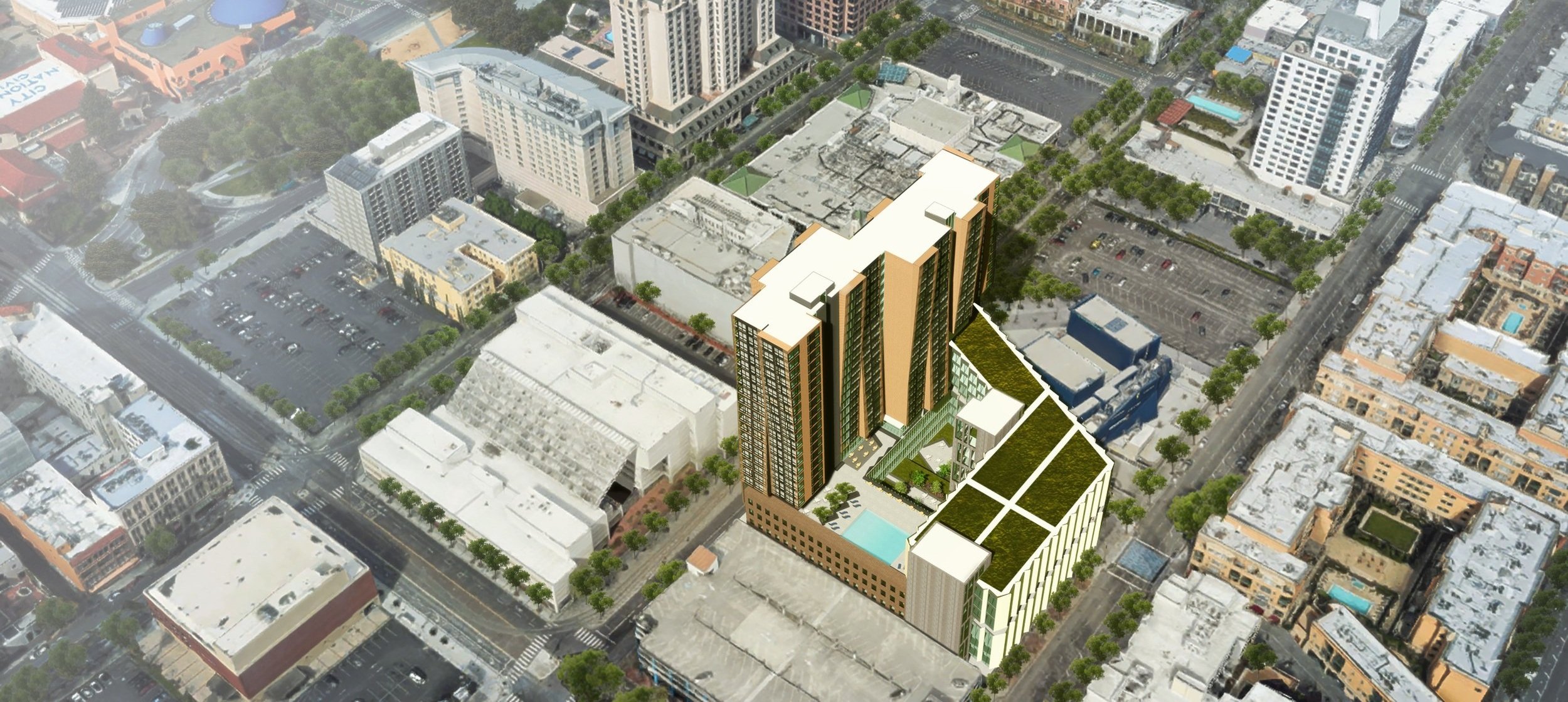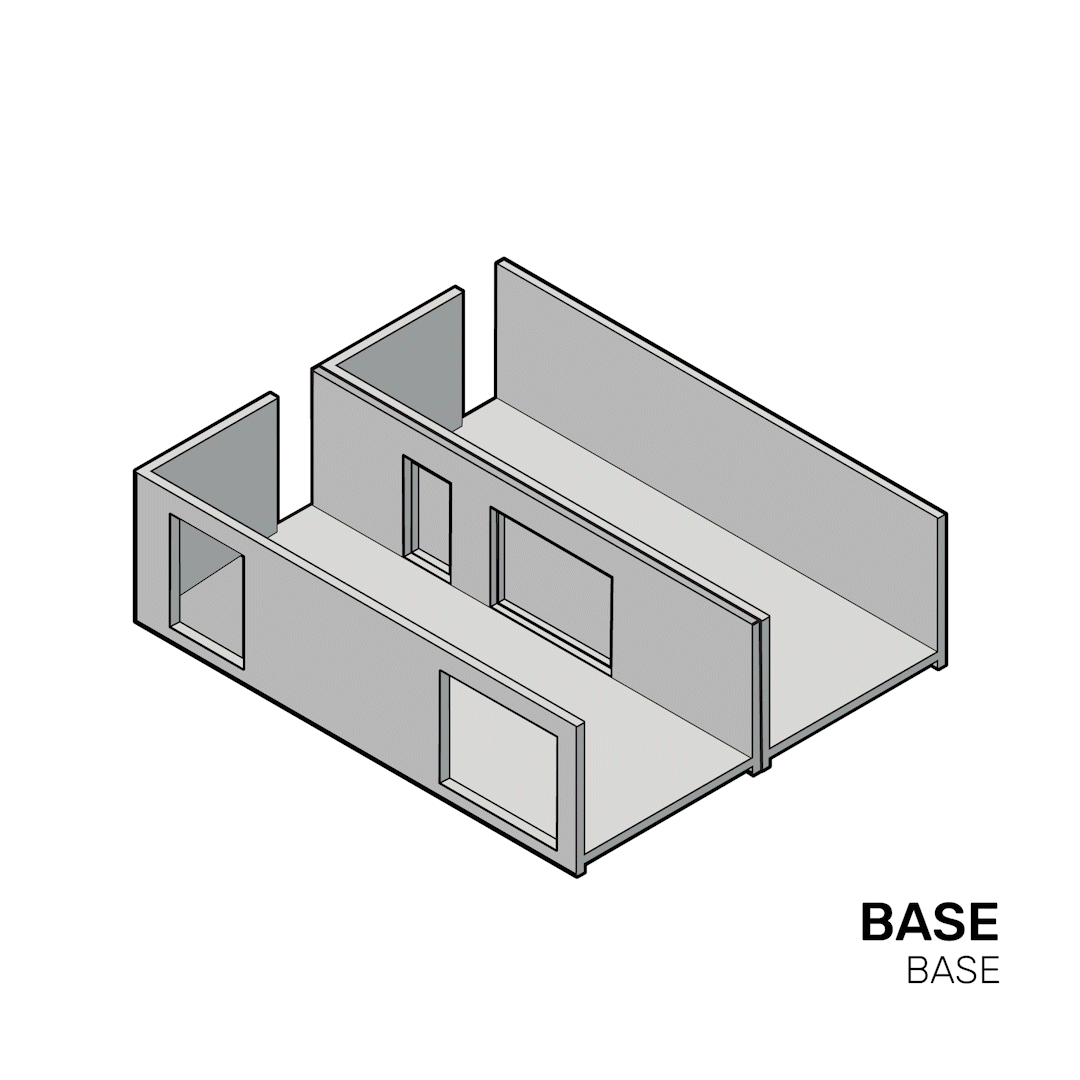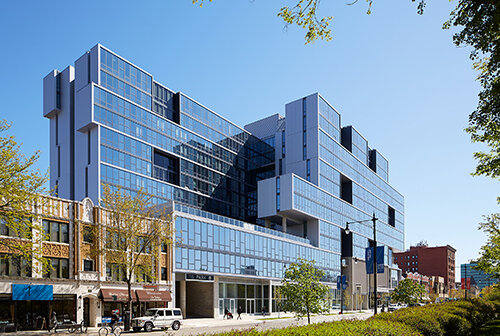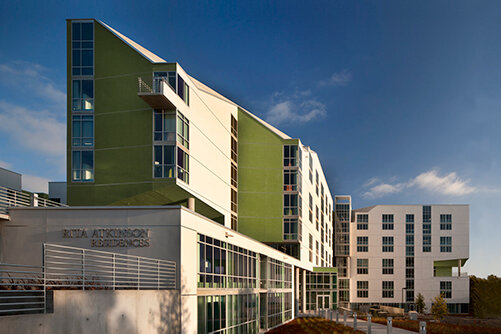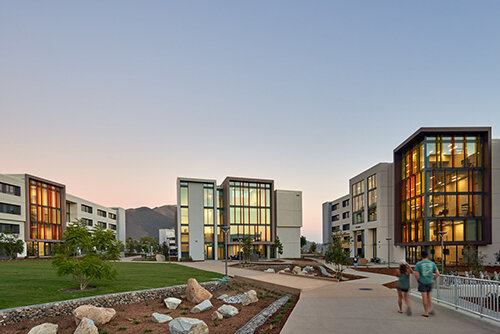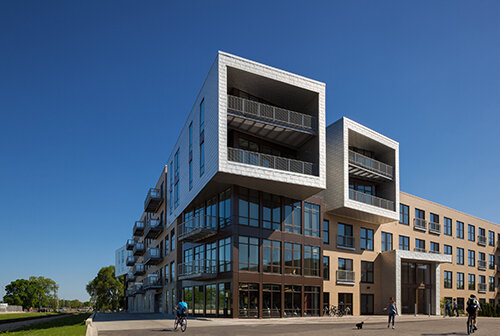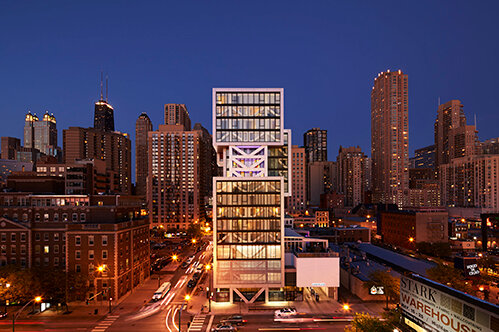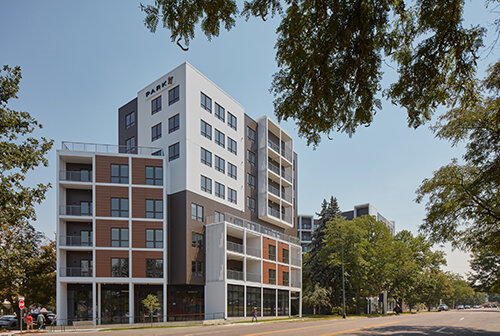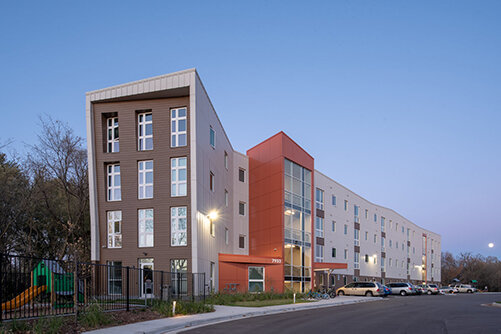CLT Modular Housing Research Study
Combining innovative strategies can really move the needle. Cross-Laminated-Timber (CLT) offers exceptional structural strength and fire resistance, sequesters carbon, and speeds construction time. Similarly, modular construction can significantly shorten construction times by allowing units to be assembled in the factory at the same time as foundations are poured and other site work is completed. With our partners, DCI Engineers and FactorOS, we developed a conceptual design of a high-rise residential building using volumetric modular CLT panels.
Location
San Jose, CA
Expertise
Architecture, Interior Design, Research, Master Planning, Sustainability
Other Services
Mixed-use, Multi-family
Partners
DCI Engineers
Factory_OS
Point Energy Innovations
U.S. Forest Service
Factory_OS relies on wood stick framing in its modules, which is great for medium-density multifamily buildings, but is not an option for high-rises. The arrival of the 2021 International Building Code (IBC) was a game changer, finally allowing mass timber buildings up to 18 stories tall. This created an opportunity to bring CLT to bear on modular high-rises.
A key innovation was the use of rigid CLT modules paired with horizontal and vertical post-tensioning. Typically used only in concrete construction, these systems provide exceptional structural strength. The result is a 24 story mixed-use tower with an 18 story CLT modular tower built atop a 6-story concrete podium. A grant won by Factory_OS from the U.S. Forest Service’s Wood Innovation Grant Awards has allowed them to begin building a mock-up of these modules.
The 2021 IBC currently only allows mass timber high-rises to use a gravity structural system, so for now, we are required to use concrete between some of the units to create lateral shear walls. However, as we test these systems further, DCI expects to prove that post-tensioning renders the concrete unnecessary. Eliminating concrete would have several benefits, making buildings faster to assemble, lightening the structural load on foundation systems, and reducing embodied carbon emissions.
Mechanical, electrical, and plumbing (MEP) connections are among the most complex aspects of modular construction. We asked Point Energy Innovations to review our initial layouts to ensure that sizing and routing of all three systems were accurate. We dropped ceilings in bathrooms and closets to fit in mechanical ducts and keep them within the module. All primary MEP connections are placed along the corridors, which enables the various trades to easily make the necessary cross-connections from the hallway without having to enter each unit.
Our next step is to design a building using the CLT modular system, to provide an example of the architectural possibilities made possible by using a system that has both a low-carbon footprint, but also affords the designer with flexibility to create a unique, memorable piece of architecture.



